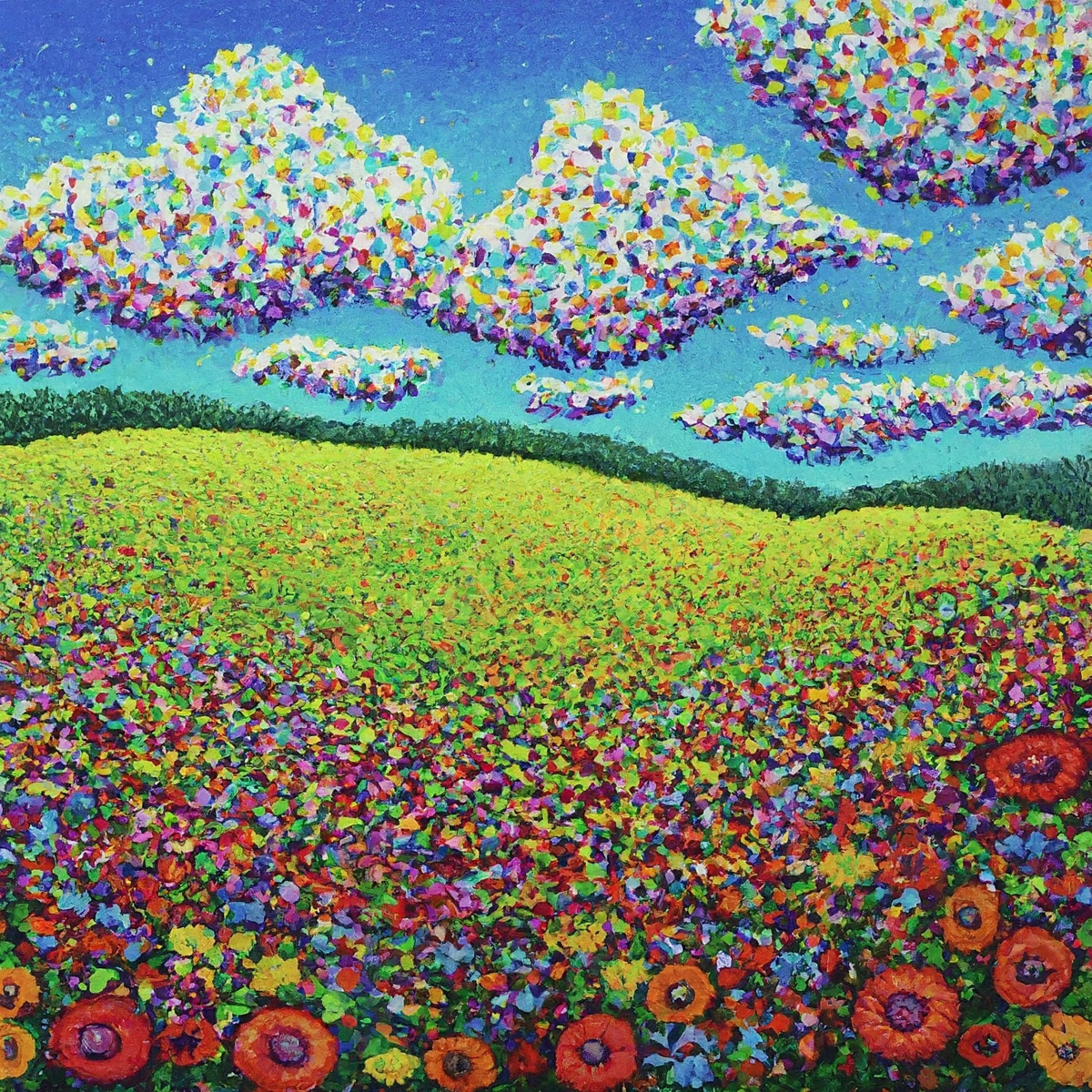Draw an image in Pointillism painting style
Pointillism is a painting technique that emerged in the late 19th century as part of the Post-Impressionist movement, characterized by the use of tiny, distinct dots of pure color applied in patterns to form an image. Instead of mixing colors on a palette, Pointillist painters placed individual dots of color directly onto the canvas, allowing the viewer’s eye to blend them visually from a distance.
Key Characteristics of Pointillism
- Tiny Dots of Color
- The defining feature of Pointillism is the use of small, uniform dots of unmixed color applied with precise, controlled brushstrokes. These dots are placed close together, and the colors interact optically to create form, light, and shadow.
- Example: Georges Seurat’s A Sunday Afternoon on the Island of La Grande Jatte, where the entire painting is made up of carefully arranged dots.
- Optical Color Mixing
- Instead of physically blending colors on a palette, Pointillist artists rely on the principle of optical mixing, where the viewer’s eye blends the separate colors from a distance to produce secondary colors and a cohesive image.
- Example: A combination of red and blue dots would appear as purple when viewed from afar.
- Scientific Approach to Color Theory
- Pointillism was influenced by contemporary scientific theories of color and light, particularly the work of French chemist Michel Eugène Chevreul, who developed the idea of simultaneous contrast, where colors enhance each other when placed side by side.
- Example: Seurat meticulously studied color theory to achieve vibrant contrasts and luminosity in his works.
- Vibrancy and Luminance
- The use of pure, unmixed colors in Pointillism creates a luminous effect, as the colors retain their full intensity and vibrancy. This approach often results in a shimmering, light-filled quality that enhances the overall visual impact.
- Example: Paul Signac’s The Pine Tree at Saint Tropez, which glows with bright, radiant colors.
- Attention to Detail
- Since Pointillism relies on the precise placement of small dots, it requires immense patience and attention to detail. The overall image comes into focus when viewed from a distance, while up close, it appears as a field of colorful dots.
- Example: In Seurat’s work, individual dots are placed meticulously to represent light, shadow, and texture in the landscape or figure.
- Focus on Light and Atmosphere
- Like the Impressionists, Pointillist artists were fascinated with the effects of light and atmosphere on a scene. They often chose outdoor settings or scenes with varying light conditions to explore how light interacted with different colors.
- Example: Camille Pissarro's The Port of Rouen uses Pointillist techniques to capture the shimmering reflection of water and the hazy light of the sky.
Common Themes in Pointillism
- Landscapes and Nature: Many Pointillist paintings feature natural landscapes, capturing the play of light and color in outdoor scenes, much like the Impressionists but with a more structured approach.
- Urban Life and Leisure: Artists like Seurat often depicted scenes of modern life, such as people relaxing in parks, enjoying leisure activities, or scenes from city life.
- Figures and Portraits: While less common, some Pointillists experimented with figures and portraits, applying the same method of optical blending to capture human features and expressions.
Famous Pointillist Painters and Works
- Georges Seurat
- The founder of Pointillism, Seurat’s most famous work, A Sunday Afternoon on the Island of La Grande Jatte, exemplifies the technique of using tiny dots to create a large, complex scene filled with figures and landscape details.
- Paul Signac
- A close associate of Seurat, Signac expanded on the technique and used larger, more visible dots in his works. His paintings, such as The Pine Tree at Saint Tropez, are known for their bold color contrasts and vibrant energy.
- Camille Pissarro
- Pissarro, a former Impressionist, experimented with Pointillism later in his career. His work, The Port of Rouen, demonstrates his ability to capture the changing light and atmosphere using the dot technique.
- Henri-Edmond Cross
- Cross was another key figure in the Pointillist movement, known for his vivid landscapes and seascapes. His use of broader brushstrokes and larger dots gave his works a more expressive, colorful feel.
Pointillism is a painting style that uses tiny, distinct dots of pure color to create an image, relying on the viewer’s eye to blend the colors optically. Rooted in scientific theories of color and light, Pointillism offers a precise, methodical approach to painting, resulting in luminous, vibrant works with a sense of clarity and detail. This style emphasizes the beauty of color interactions and the complexity of light, making it a unique and influential branch of Post-Impressionism.
Pointillism Paintings with Landscapes and Nature Theme
Pointillism paintings with landscapes and nature themes beautifully capture the transient qualities ...

